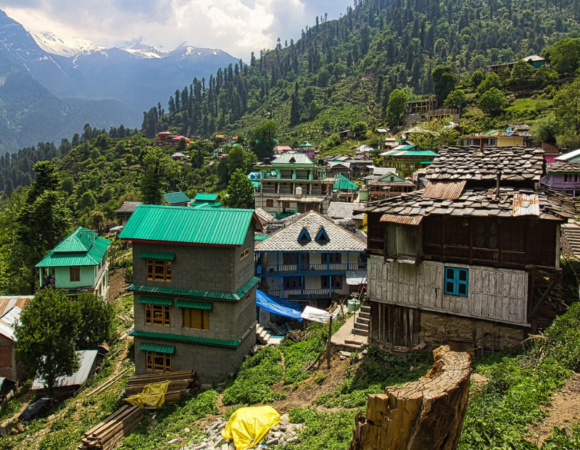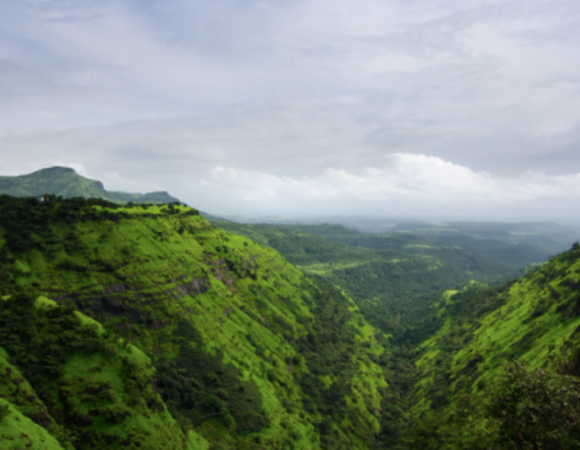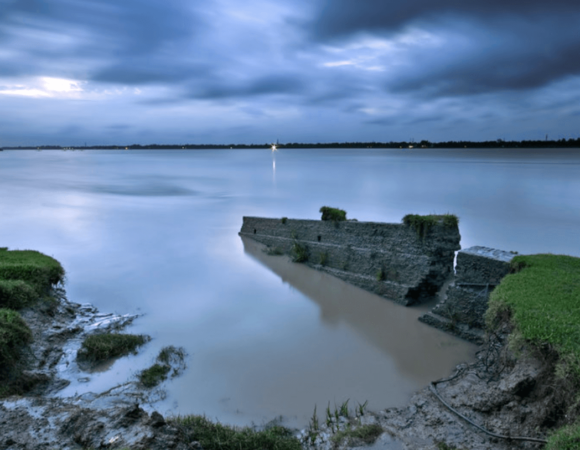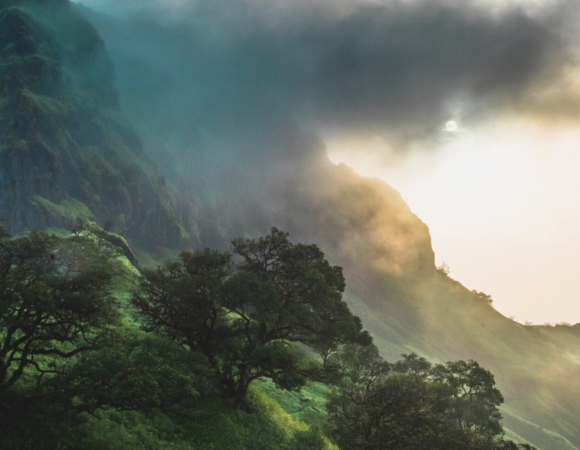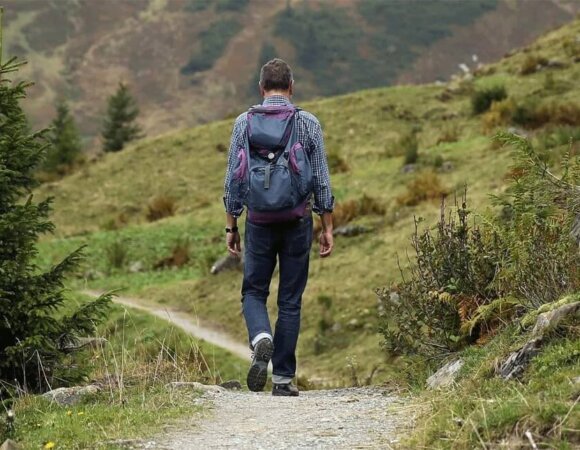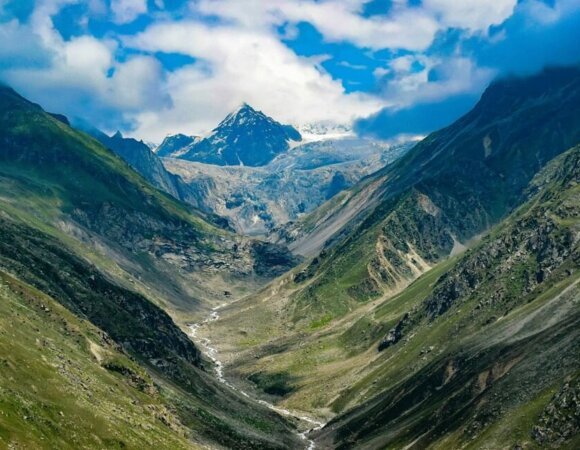How To Stay Fit For High Altitude Trek, Importance Of Fitness & FAQ’s
Table of Contents
ToggleHow to stay fit for high altitude trek is an important aspect to consider before embarking on such an adventure. High altitude trekking is a challenging and rewarding experience that involves exploring some of the world’s most breathtaking landscapes at high elevations. These treks often take place in mountainous regions, such as the Himalayas or the Andes, and can range in difficulty from moderate to extremely challenging.

To prepare for a high altitude trek, it is important to focus on cardiovascular fitness, strength training, and hiking practice, as well as proper nutrition and altitude acclimatization. Whenever you are going to plan your trek take a proper look at “How to Stay Fit for High Altitude Trek” issue it is the only thing which will survive you in any situation.
Altitude sickness is a serious risk for high altitude trekkers, so it is important to take the necessary precautions to ensure a safe and enjoyable experience. Despite the physical challenges, high altitude trekking offers a unique opportunity to connect with nature and challenge oneself in a way that few other experiences can.
Importance of Fitness on a High Altitude Trek
Here are the key points on the importance of fitness on high altitude trek:
- Altitude trekking can be physically demanding and exhausting, especially at high elevations where the air is thinner and contains less oxygen.
- Being physically fit helps to mitigate the effects of altitude and reduce the risk of altitude sickness, which can significantly impact a trekker’s ability to complete the trek.
- Regular exercise, including cardiovascular fitness and strength training, helps to build endurance, improve lung capacity, and build the muscles used in trekking, such as the legs and core.
- Proper nutrition and hydration are also important for staying fit on a high altitude trek. A nutritious diet provides the necessary fuel for the body, while staying hydrated helps prevent altitude sickness.
- Trekkers who are physically fit are better equipped to handle the physical demands of the trek, such as carrying heavy backpacks and navigating difficult terrain.
- Fitness also helps to improve mental resilience and reduce the risk of altitude-related anxiety or panic.
- Being physically fit can also enhance the overall trekking experience, allowing trekkers to fully enjoy the natural beauty of high altitude landscapes without being hindered by physical exhaustion or illness.
Fitness is crucial for a successful and enjoyable high altitude trek. By preparing properly and focusing on fitness, trekkers can reduce the risk of altitude sickness, improve endurance, and fully immerse themselves in the stunning natural beauty of high altitude landscapes.
It is also a challenging and rewarding experience that allows you to explore some of the most beautiful places on earth. However, it can also be physically demanding, and requires a certain level of fitness to ensure a safe and enjoyable journey.





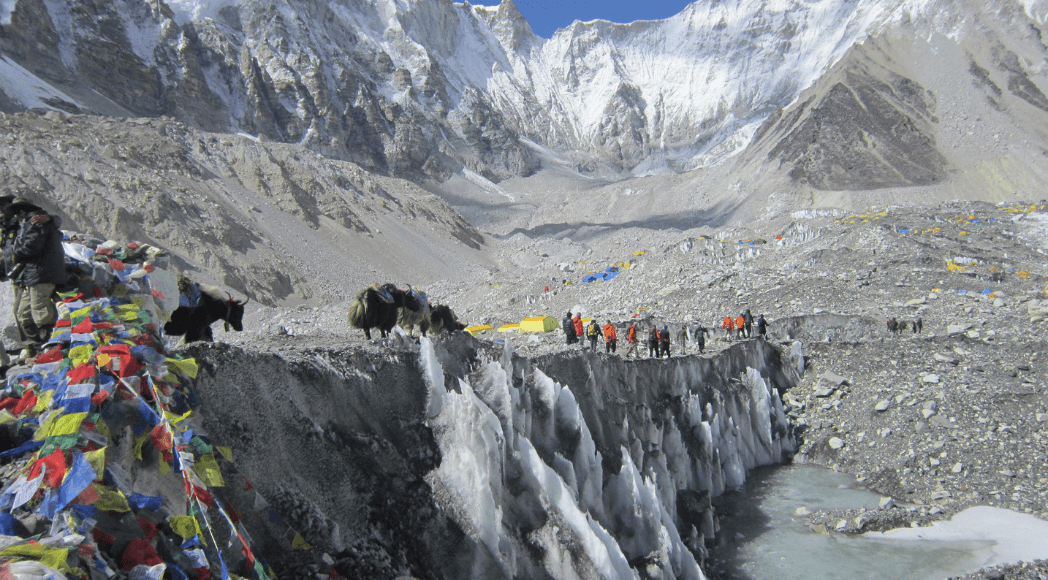
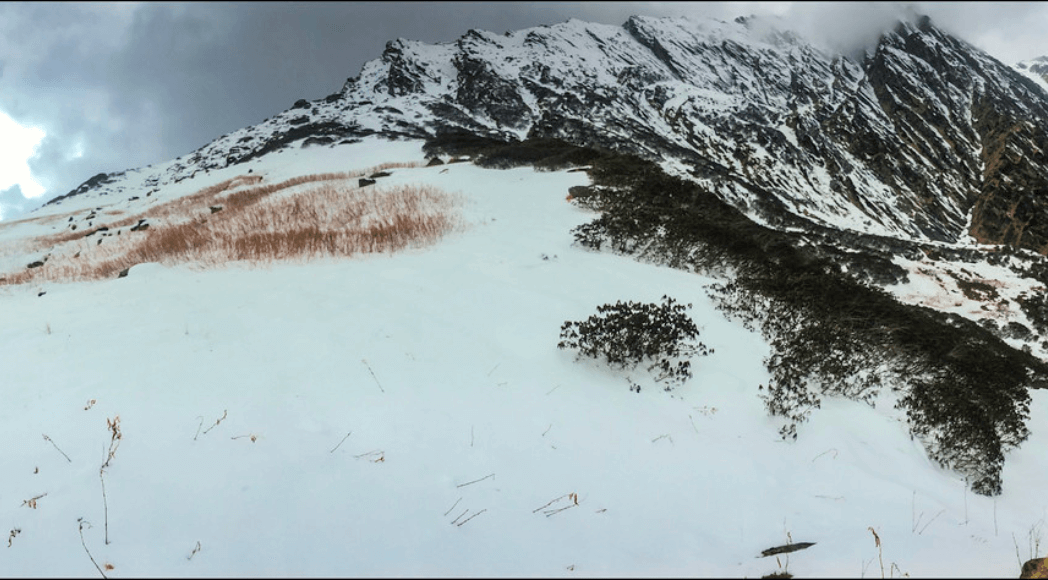
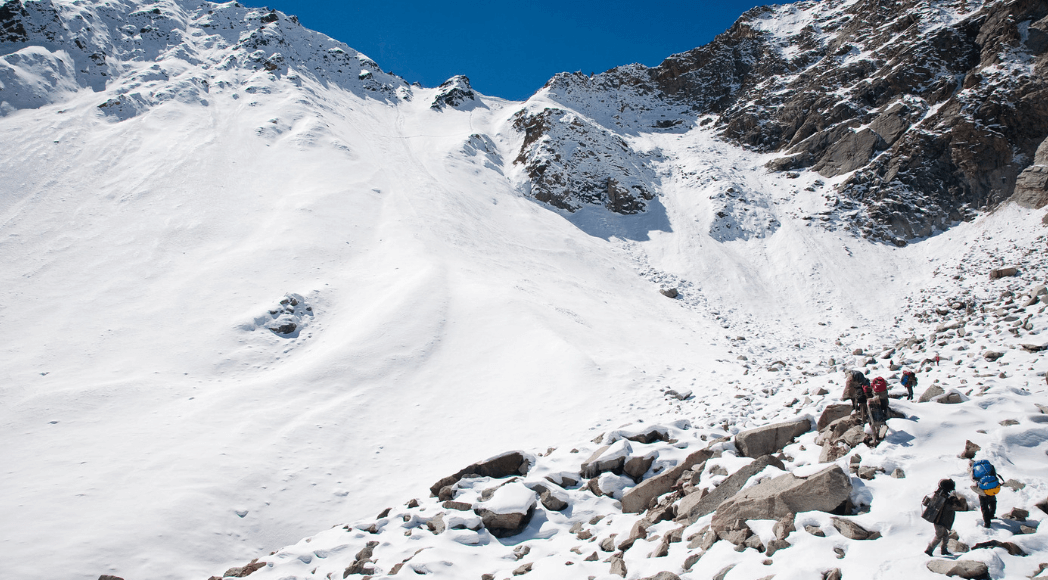
6 Tips How to Stay Fit for High Altitude Trek
Cardiovascular Fitness
High altitude trekking involves a lot of uphill and downhill walking, and requires a good level of cardiovascular fitness. To prepare for your trek, it is recommended that you do some regular cardiovascular exercise, such as running, cycling, or swimming. Aim to exercise at least three times a week, gradually increasing your intensity and duration as you get closer to your trekking date.
Strength Training
In addition to cardiovascular fitness, high altitude trekking also requires good muscular endurance and strength, particularly in the legs and core. To build up your strength, incorporate some resistance training into your workout routine, such as squats, lunges, and calf raises. You can also use resistance bands or weights to add more resistance to your exercises.
Hiking Practice
One of the best ways to prepare for a high altitude trek is to practice hiking on varied terrain. Start with short hikes on flat terrain, and gradually increase the distance and elevation gain over time. It is also a good idea to practice hiking with a loaded backpack, as this will simulate the weight you will be carrying on your trek.
Proper Nutrition
Eating a healthy and balanced diet is essential for staying fit for high altitude trekking. Focus on eating a variety of nutrient-dense foods, such as whole grains, lean protein, fruits, and vegetables. It is also important to stay hydrated, as dehydration can exacerbate altitude sickness symptoms.
Altitude Acclimatization
Altitude sickness can be a serious risk for high altitude trekkers, and can even be life-threatening in severe cases. To reduce your risk of altitude sickness, it is important to properly acclimatize to the altitude. This involves slowly ascending to higher elevations over a period of days, and allowing your body time to adjust to the lower oxygen levels.
Rest and Recovery
Rest and recovery are important for allowing your body to repair and build strength after each workout or trek. Make sure to get enough sleep each night, and take rest days as needed. It is also important to listen to your body and adjust your training or trekking schedule as needed, to avoid overexertion or injury.
High Altitude Treks in Himachal
Himachal Pradesh is a beautiful state in northern India that is known for its stunning mountain landscapes and challenging high altitude treks. Here are some of the most popular high altitude treks in Himachal:
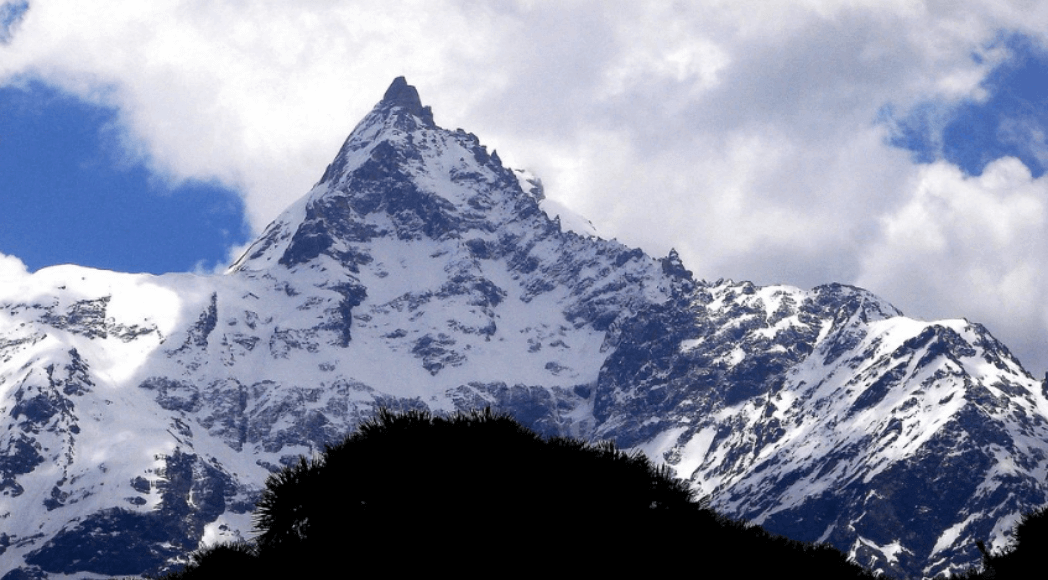
- Hampta Pass Trek – This trek takes you through the stunning valleys of Kullu and Lahaul, and over the Hampta Pass at an altitude of 14,100 feet. The trek takes 5-6 days and is considered moderately difficult.
- Pin Parvati Pass Trek – This is a challenging trek that takes you over the Pin Parvati Pass at an altitude of 17,500 feet. The trek takes 11-12 days and is recommended for experienced trekkers.
- Beas Kund Trek – This is a relatively easy trek that takes you to the source of the Beas River at an altitude of 12,000 feet. The trek takes 3-4 days and is a great option for beginners.
- Indrahar Pass Trek – This trek takes you through the Dhauladhar Range of the Himalayas and over the Indrahar Pass at an altitude of 14,245 feet. The trek takes 4-5 days and is moderately difficult.
- Kareri Lake Trek – This is a popular trek that takes you to the stunning Kareri Lake at an altitude of 9,650 feet. The trek takes 3-4 days and is relatively easy.
These are just a few of the many high altitude treks you can do in Himachal Pradesh. It’s important to choose a trek that is suitable for your level of fitness and experience, and to prepare well for the altitude and weather conditions.
High Altitude Treks in Uttarakhand

Uttarakhand is a beautiful state in northern India that is known for its stunning mountain landscapes and challenging high altitude treks. Here are some of the most popular high altitude treks in Uttarakhand:
- Roopkund Trek – This trek takes you to the mysterious Roopkund Lake, also known as the Skeleton Lake, at an altitude of 16,499 feet. The trek takes 7-8 days and is considered moderately difficult.
- Kedarkantha Trek – This is a relatively easy trek that takes you to the summit of Kedarkantha Peak at an altitude of 12,500 feet. The trek takes 4-5 days and is a great option for beginners.
- Valley of Flowers Trek – This trek takes you through the stunning Valley of Flowers National Park, known for its beautiful alpine flowers, at an altitude of 12,000 feet. The trek takes 6-7 days and is relatively easy.
- Har Ki Dun Trek – This trek takes you to the beautiful Har Ki Dun Valley at an altitude of 11,675 feet. The trek takes 7-8 days and is moderately difficult.
- Nanda Devi Base Camp Trek – This is a challenging trek that takes you to the base camp of Nanda Devi, one of the highest peaks in India, at an altitude of 14,500 feet. The trek takes 11-12 days and is recommended for experienced trekkers.
These are just a few of the many high altitude treks you can do in Uttarakhand. It’s important to choose a trek that is suitable for your level of fitness and experience, and to prepare well for the altitude and weather conditions.
High Altitude Treks in Sikkim
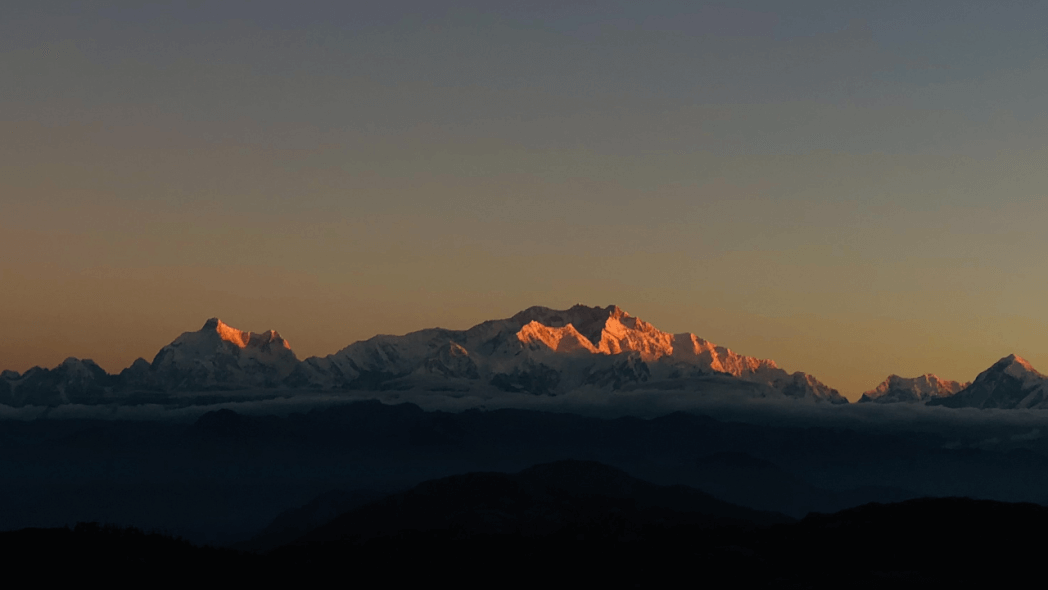
Sikkim is a small state located in the northeastern part of India, known for its stunning mountain landscapes and challenging high altitude treks. Here are some of the most popular high altitude treks in Sikkim:
- Goechala Trek – This trek takes you to the base of the Kanchenjunga peak, the third highest mountain in the world, at an altitude of 16,200 feet. The trek takes 10-11 days and is considered moderately difficult.
- Dzongri Trek – This trek takes you to the Dzongri peak at an altitude of 13,675 feet, from where you can enjoy stunning views of the Kanchenjunga range. The trek takes 6-7 days and is considered moderately difficult.
- Singalila Ridge Trek – This trek takes you along the border of Sikkim and West Bengal, and offers stunning views of the Kanchenjunga range, Everest, and other Himalayan peaks. The trek takes 8-9 days and is considered moderately difficult.
- Green Lake Trek – This is a challenging trek that takes you to the Green Lake, located at the base of the Kanchenjunga peak, at an altitude of 16,900 feet. The trek takes 12-13 days and is recommended for experienced trekkers.
- Kangchenjunga Base Camp Trek – This is a challenging trek that takes you to the base camp of the Kanchenjunga peak at an altitude of 16,500 feet. The trek takes 15-16 days and is recommended for experienced trekkers.
These are just a few of the many high altitude treks you can do in Sikkim. It’s important to choose a trek that is suitable for your level of fitness and experience, and to prepare well for the altitude and weather conditions.
High Altitude Treks in Jammu & Kashmir

Jammu & Kashmir is a beautiful state in northern India that is known for its stunning mountain landscapes and challenging high altitude treks. Here are some of the most popular high altitude treks in Jammu & Kashmir:
- Kashmir Great Lakes Trek – This trek takes you through the stunning alpine meadows and seven high altitude lakes at an altitude of 13,750 feet. The trek takes 8-9 days and is considered moderately difficult.
- Tarsar Marsar Trek – This is a moderate trek that takes you to the Tarsar and Marsar lakes, located at an altitude of 13,000 feet. The trek takes 7-8 days and is a great option for beginners.
- Stok Kangri Trek – This is a challenging trek that takes you to the summit of Stok Kangri, one of the highest peaks in India, at an altitude of 20,182 feet. The trek takes 9-10 days and is recommended for experienced trekkers.
- Amarnath Yatra Trek – This is a holy pilgrimage trek that takes you to the Amarnath Cave, located at an altitude of 12,756 feet. The trek takes 5-6 days and is considered moderately difficult.
- Kolahoi Glacier Trek – This is a challenging trek that takes you to the Kolahoi Glacier, located at an altitude of 12,000 feet. The trek takes 7-8 days and is recommended for experienced trekkers.
These are just a few of the many high altitude treks you can do in Jammu & Kashmir. It’s important to choose a trek that is suitable for your level of fitness and experience, and to prepare well for the altitude and weather conditions.
In conclusion, How to Stay Fit for High Altitude Trek is a crucial aspect to consider before embarking on a challenging adventure. It’s important to have a fitness plan that includes cardiovascular and strength training exercises, a healthy diet, and staying well-hydrated. Starting the training well in advance of the trek allows enough time to build endurance and strength. By staying fit, you can reduce the risk of altitude sickness and enjoy the trek to its fullest.

To ensure a successful high altitude trek, How to Stay Fit for High Altitude Trek should be your top priority. Proper fitness training helps prepare your body for the challenges of high altitude trekking, including steep slopes and reduced oxygen levels. A balanced diet and hydration are essential to support your body during the trek. Taking care of your physical and mental health before the trek helps you stay focused and positive throughout the journey.
Frequently Asked Questions FAQ’s for How to Stay fit for High Altitude Trek
What is the best way to prepare for high altitude trekking?
The best way to prepare for high altitude trekking is to focus on cardiovascular fitness, strength training, hiking practice, proper nutrition, altitude acclimatization, and rest and recovery.
What type of cardiovascular exercise is best for high altitude trekking?
Any form of cardiovascular exercise can be beneficial, but running, cycling, and swimming are good options. Try to exercise at least three times a week, gradually increasing your intensity and duration as you get closer to your trekking date.
How can I build up my leg and core strength for high altitude trekking?
Incorporating resistance training into your workout routine is a good way to build up leg and core strength. Squats, lunges, calf raises, and planks are all effective exercises.
How long should I practice hiking before my high altitude trek?
It is recommended that you practice hiking on varied terrain for at least a few weeks before your high altitude trek. Start with short hikes on flat terrain, and gradually increase the distance and elevation gain over time.
What should I eat to stay fit for high altitude trekking?
Focus on eating a variety of nutrient-dense foods, such as whole grains, lean protein, fruits, and vegetables. It is also important to stay hydrated, as dehydration can exacerbate altitude sickness symptoms.
How can I acclimatize to high altitude?
Slowly ascending to higher elevations over a period of days, and allowing your body time to adjust to the lower oxygen levels, is the best way to acclimatize to high altitude.
How much rest do I need between training sessions?
Rest and recovery are important for allowing your body to repair and build strength after each workout or trek. Make sure to get enough sleep each night, and take rest days as needed.
What should I do if I experience altitude sickness symptoms?
If you experience altitude sickness symptoms, it is important to descend to a lower elevation as soon as possible. Rest and hydration can also help alleviate symptoms.
How should I adjust my training schedule for high altitude trekking?
Listen to your body and adjust your training or trekking schedule as needed, to avoid overexertion or injury. Gradually increase the intensity and duration of your workouts, and allow for enough rest and recovery time.
How can I ensure a safe and enjoyable high altitude trekking experience?
Preparing properly, staying hydrated and nourished, acclimatizing slowly, and listening to your body are all important for ensuring a safe and enjoyable high altitude trekking experience. Be sure to also follow all safety guidelines and regulations set by your trekking company or guide.


